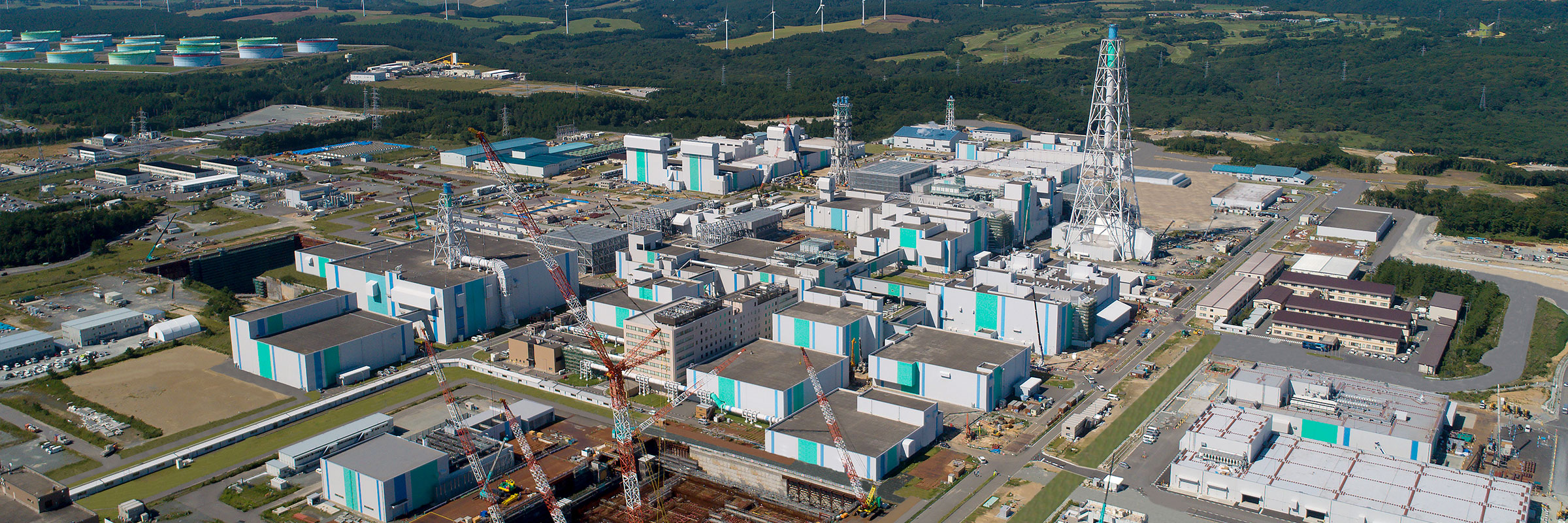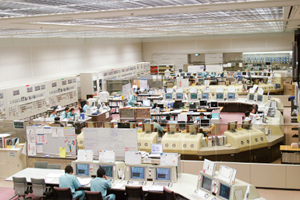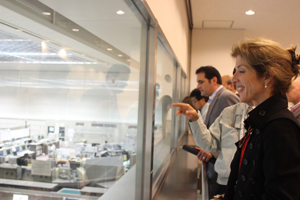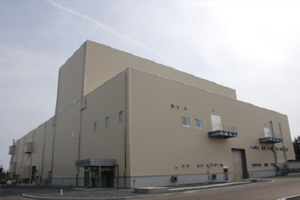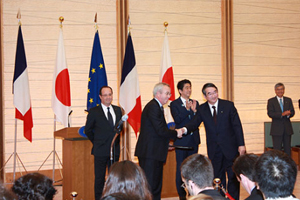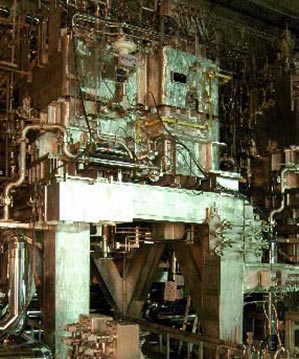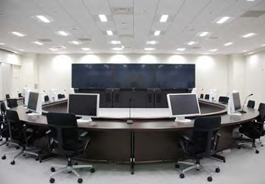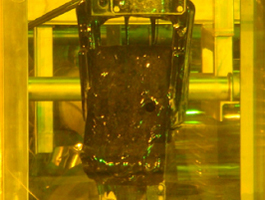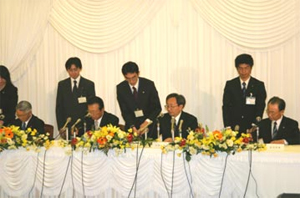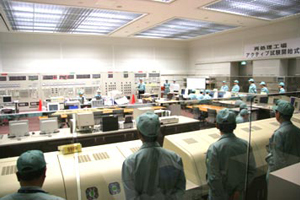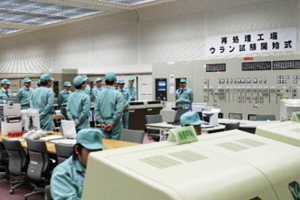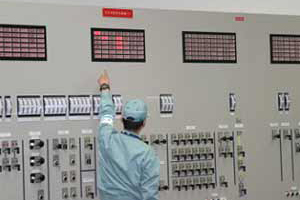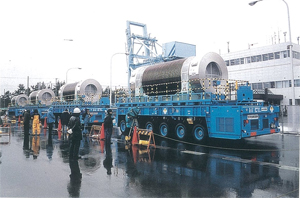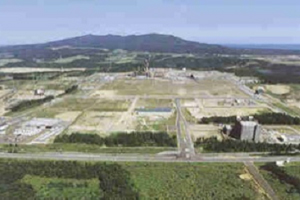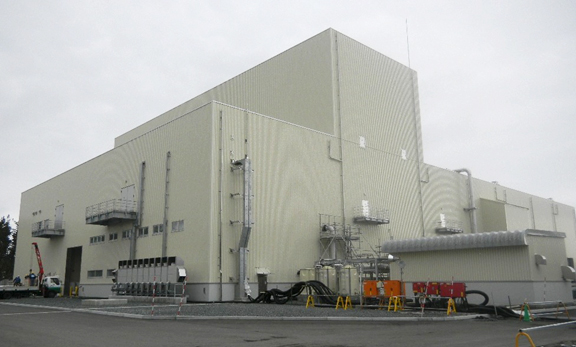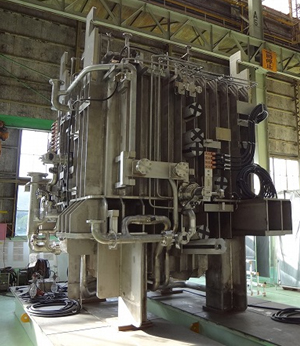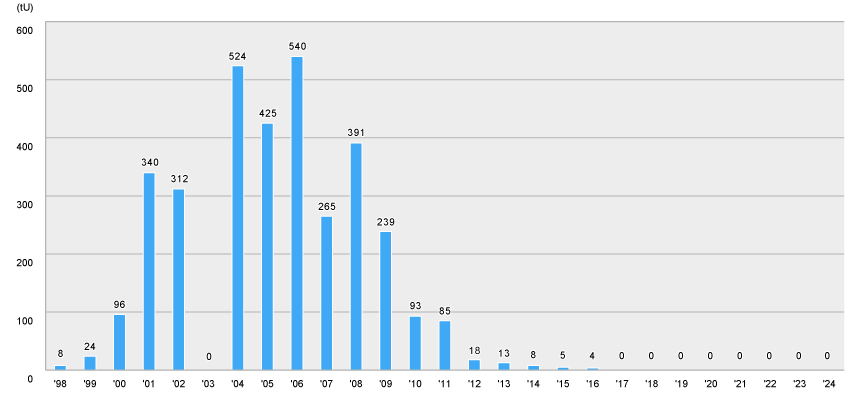-
- Completion: FY2026
- 2016
-
- June 2015
- JNFL facility visit by Caroline Kennedy, the US Ambassador to Japan
- 2015
-
- January 2014
- Application for conformance with the New Regulatory Requirements
The application for approval of change in safety regulations for nuclear facilities and the application for license to modify the reprocessing activities were filed, in preparation for the examination for verifying conformance with the New Regulatory Requirements.
- 2014
-
- December 2013
- Enforcement of the New Regulatory Requirements for the nuclear fuel facilities
-
- October 2013
- Completion of the vitrification technology development facility "Rokkasho Vitrification Laboratory (RVL)"
The credibility of vitrification technology will be further improved by carrying out research and development such as various tests in the new glass melter, by testing the remote operation and by conducting technical proficiency training for the operators.
-
- June 2013
- Consent and signing of "The Joint Communique regarding the Future Nuclear Fuel Cycle" with AREVA
It was agreed upon that it would be beneficial to cooperate with each other in order to ensure safe and early recycling of spent fuel, and to ensure a long-term and sustained contribution to the nuclear power industry of Japan.
-
- May 2013
- Completion of the A series of vitrification tests
By completing this test, all tests that needed to be confirmed for the purpose of the pre-service inspection have been completed.
-
- January 2013
- Completion of the B series of vitrification tests
Operational performance was verified at the maximum discharging capacity designed, and a given number of batches can be operated while the glass temperature, gas phase temperature, and the temperature of the furnace bottom is within the target range.
- 2013
-
- August 2012
- Completion of the pre-confirmation test of the glass melter
-
- January 2012
- Drop in speed of discharge flow of glass
When simulated glass beads were fed in the glass melter (System B) in the vitrification facility, and the glass was allowed to discharge, there was decrease in the flowing property.
- February 2012
- Recovery work
Implementation of measures such as controlling the occurrence and deposition of foreign material at the discharge nozzle.
- May 2012
- Cause and measures
- July 2012
- Completion of pre-confirmation test
After the measures were implemented, it was confirmed that the flowing properties had recovered. Hence the process moved on to pre-confirmation tests.
- 2012
-
- December 2011
- Commencement of operation of the New Emergency Response Facility.
-
- March 2011
- Tohoku Pacific Ocean Earthquake
Since external power supply was lost, events such as having to use the emergency generator etc. occurred. The areas outside the power station were not affected and there was no leakage of radioactive substances from JNFL.
- Situation at that time
- Results of monitoring samples from the environment after the Fukushima Daiichi Nuclear Power Station accident
- 2011
- 2010
-
- January 2009
- Dripping of high level liquid waste at the vitrification cell in the vitrification facility.
Dripping of radioactive liquid waste from the flange part closing the high level liquid waste supply pipe was detected.
- February 2009
- Dripping occurred again
When the monitoring was stepped up by means of ITV camera, once again dripping of high level liquid waste occurred.
- October 2009
- Pool of water in the tray
It was confirmed that there was a pool of water in the tray (leakage had recurred) set up under the flange closing the pipes transporting high level liquid waste.
- February 2010
- Final report
- 2009
-
- December 2008
- Bend in the stirring rod inside the glass melter
The movement of the stirring rod had become slow. When the inside of the melter was checked with a camera it was found that the stirring rod was bent.
- December 2008
- Progress report
- December 2008
- Some of the glass melter ceiling bricks were damaged
When the inside of the melter was checked with a camera, it was confirmed that some of the glass melter ceiling bricks had been damaged.
- February 2010
- Progress report
- June 2010
- Retrieving of fallen bricks
The fallen bricks were successfully retrieved
- July 2010
- Final report
When the causes and the measures taken were summarized and investigated, it was confirmed that there was no problem in terms of safety of operation in the future.
-
- July 2008
- Discontinuation of the glass melter operational performance verification test
The operational performance verification test of the glass melter had been started. However, as sufficient discharge flow of glass could not be confirmed, the operation was stopped.
- October 2008
- Final report
- 2008
-
- November 2006
- Start of production of uranium and plutonium mixed oxide product
-
- March 2006
- Safety agreement pertaining to the active test of the Rokkasho Reprocessing Plant was concluded with the Aomori Prefecture and the Rokkasho village
#Ongoing Status of implementation
- 2006
-
- June 2005
- Water leakage from the burnable poison handling pit pool in the spent fuel receiving & storage building
- June 2005
- Identification of the leakage location
- July 2005
- Cause and future course of action
- August 2005
- Results of re-inspection
- 2005
-
- December 2004 - January 2006
- Implementation of Uranium test
- 2004
-
- February 2003
- Water leakage from the fuel delivery pit pool in the spent fuel receiving & storage facility
- April 2003
- Identification of the leakage location
- August 2003
- Results of the investigation & inspection and maintenance plan
- 2003
-
- November 2002 - December 2005
- Implementation of chemical test
- 2002
-
- August 2001
- Water leakage from the PWR fuel storage pool in the spent fuel receiving & storage facility
- November 2002
- As a result of the investigation, it was concluded that there was leakage from the pool
- August 2003
- Results of the investigation & inspection and maintenance plan
-
- April 2001 - September 2004
- Implementation of water flow operational test
- 2001
-
- December 2000
- Full-scale loading of spent fuel was carried out for the first time
-
- October 2000
- Safety agreement pertaining to the spent fuel receiving & storage facility was concluded with the Aomori Prefecture and the Rokkasho village
- 2000
-
- December 1999
- Commencement of the reprocessing business
(Completion of the spent fuel receiving and storage facility)
- 1999
-
- April 1993
- Commencement of construction of Reprocessing Plant
- 1993
